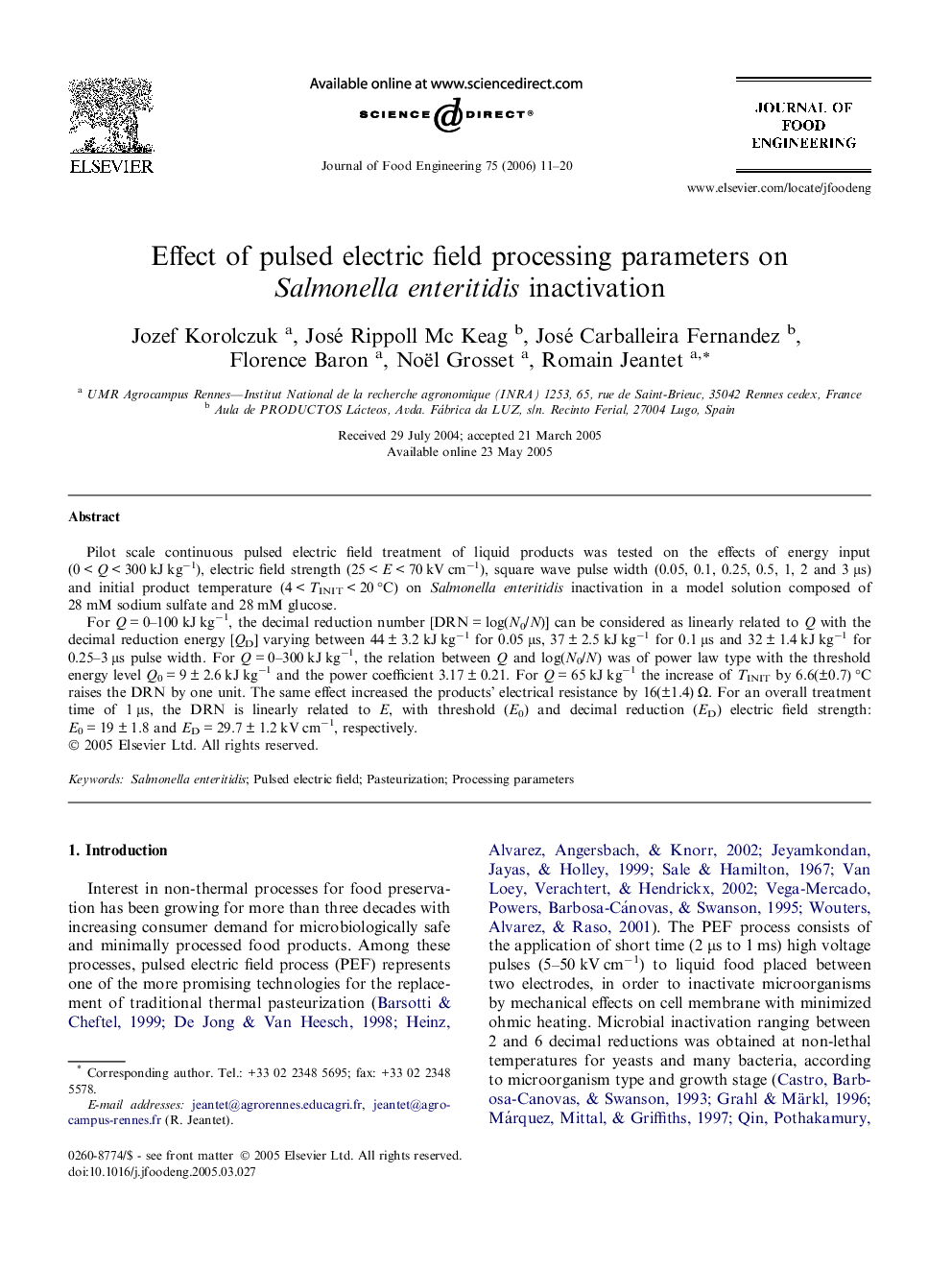| کد مقاله | کد نشریه | سال انتشار | مقاله انگلیسی | نسخه تمام متن |
|---|---|---|---|---|
| 226511 | 464546 | 2006 | 10 صفحه PDF | دانلود رایگان |

Pilot scale continuous pulsed electric field treatment of liquid products was tested on the effects of energy input (0 < Q < 300 kJ kg−1), electric field strength (25 < E < 70 kV cm−1), square wave pulse width (0.05, 0.1, 0.25, 0.5, 1, 2 and 3 μs) and initial product temperature (4 < TINIT < 20 °C) on Salmonella enteritidis inactivation in a model solution composed of 28 mM sodium sulfate and 28 mM glucose.For Q = 0–100 kJ kg−1, the decimal reduction number [DRN = log(N0/N)] can be considered as linearly related to Q with the decimal reduction energy [QD] varying between 44 ± 3.2 kJ kg−1 for 0.05 μs, 37 ± 2.5 kJ kg−1 for 0.1 μs and 32 ± 1.4 kJ kg−1 for 0.25–3 μs pulse width. For Q = 0–300 kJ kg−1, the relation between Q and log(N0/N) was of power law type with the threshold energy level Q0 = 9 ± 2.6 kJ kg−1 and the power coefficient 3.17 ± 0.21. For Q = 65 kJ kg−1 the increase of TINIT by 6.6(±0.7) °C raises the DRN by one unit. The same effect increased the products’ electrical resistance by 16(±1.4) Ω. For an overall treatment time of 1 μs, the DRN is linearly related to E, with threshold (E0) and decimal reduction (ED) electric field strength: E0 = 19 ± 1.8 and ED = 29.7 ± 1.2 kV cm−1, respectively.
Journal: Journal of Food Engineering - Volume 75, Issue 1, July 2006, Pages 11–20